Dana Gioia and Mateusz Stróżyński
Seneca Philosophus
In April 2023, the American poet Dana Gioia published The Madness of Hercules, a verse translation of the Latin tragedy Hercules Furens, written by Lucius Annaeus Seneca the Younger (4 BC–AD 65). That month also saw the publication of the first Polish translation of Hercules Furens in four centuries, by Mateusz Stróżyński, Director of the Institute of Classical Philology at Adam Mickiewicz University in Poznań, Poland. This coincidence provides us with an excuse to look at Seneca and his dramatic work in some depth.
Seneca remains controversial, as both a writer and a public figure, despite the fact that he has been dead for almost 2,000 years. He was born in the Spanish provinces of the Roman Empire, in the city now known as Córdoba; but he was brought up in Rome, where his family became distinguished in the imperial administration. Perhaps a little too distinguished, in the eyes of the Emperor Claudius (10 BC–AD 54): Seneca was exiled in 41, and spent eight years on the island of Corsica, where he endured his solitude with the aid of Stoic philosophy.

In AD 49, Seneca was recalled to Rome to act as tutor to Lucius Domitius Ahenobarbus (37–68), who became known as Nero Claudius Caesar Augustus Germanicus when he was adopted by the emperor, and was himself elevated to the imperial throne when his mother murdered Claudius, in 54. Seneca became one of Emperor Nero’s closest advisers. But despite all the wealth, power and influence he gained, his position remained precarious; he was forced to commit suicide in 65.
Seneca has long been renowned as a master of Latin prose: his lucid, supple, charmingly amiable style has been acknowledged as a model for essayists since the Renaissance. In terms of philosophy, Seneca’s epistles and treatises have proved arguably more influential than even the writings of Epictetus, Cicero and Marcus Aurelius in disseminating Stoic ideas. Seneca’s Naturales quaestiones may be an obsolete work as far as its physics and meteorology are concerned, but it remains unsurpassed as an example of accessible, elegant scientific literature.
As for his verse tragedies, they are bleak, and bloody.
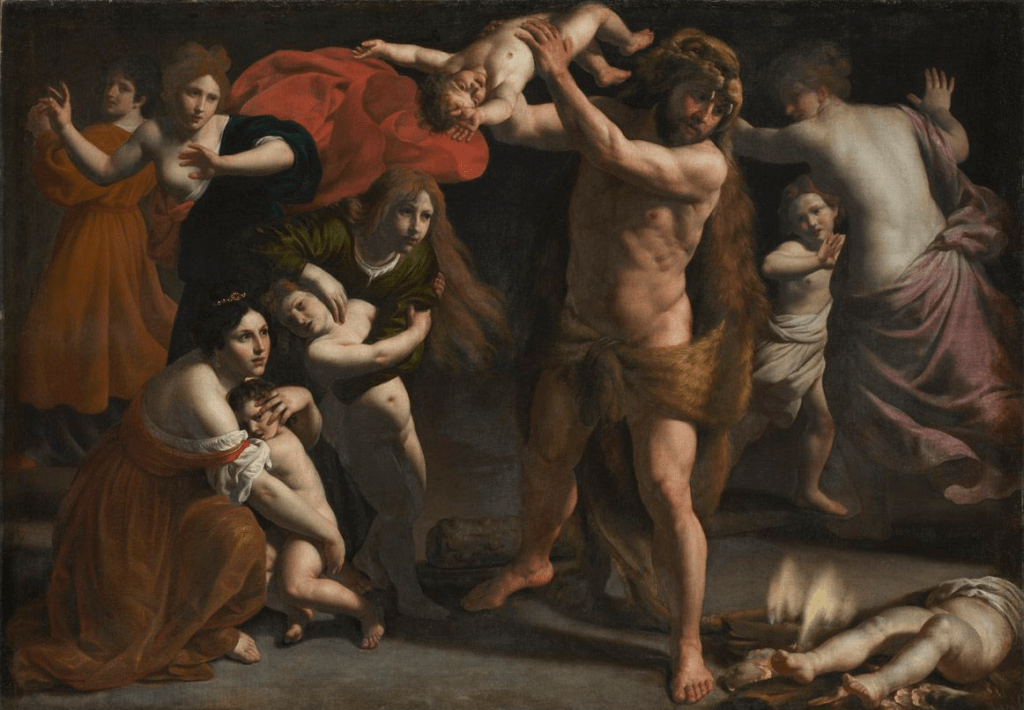
Seneca Tragicus
Dana Gioia writes, in his introduction to The Madness of Hercules:
If Seneca’s plays survived the sack of Rome, the burning of libraries, the leaky roofs of monasteries, the appetites of beetle larvae, and the erosions of rot and mildew, they have not had a conspicuously easier time among modern critics. His tragedies have been dismissed both for too closely resembling Greek models and for too freely departing from them. As the classicist Frederick Ahl has observed, “no field of literary study rivals that of Latin poetry in so systematically belittling the quality of its works and authors.” No Roman genre has suffered more consistent disparagement than tragedy.
The critical challenge in assessing Seneca is quite simple—to see his plays as works of art in their own right and to understand how they fit into the tradition of European tragedy. To begin this task, however, one must be willing to see the changes he made in dramatic style and structure as conscious innovations, not as unintentional failings. For all his learned borrowing from Euripides, Aeschylus, and Sophocles, Seneca’s aesthetic has little in common with Periclean tragedy. His dramaturgy marks not only a deliberate departure from the Greek tradition but a radical reconception of the genre from narrative to lyric terms.
From Aristotle to the Enlightenment influential theories of tragedy have emphasized the connection between the genre’s emotional force and its narrative concentration and coherence. Sophocles was the first playwright to understand the power tragic theater gains by carefully arranging the story line. The tragic mode, he realized, unlike epic, comedy, or romance, cannot easily assimilate episodic material. Sophocles’s innovation was not lost on Aristotle, who called plotting “the first principle… the soul of tragedy.”
Two and a half millennia before Edgar Allan Poe explained that the short story must integrate every element of the work to create a single pattern of effect, the Athenians had applied this aesthetic to tragedy. Italian Renaissance commentators, reading the Poetics through the lens of Seneca, extrapolated Aristotle’s practical observations on Sophoclean compression into a general theory of the dramatic unities of time, place, and action. Though it is now mandatory to belittle the Italian aestheticians and their Enlightenment disciples, those cognoscenti understood something essential about the imaginative integrity of tragic drama, even if they expressed it too schematically.
Classical tragedy achieves its harrowing impact through extreme compression and integration—of plotting, language, imagery, and theme. The Greek tragedians carefully foreshadowed and foreshortened the dramatic action to create a single narrative line that moves in measured steps to a fateful and usually dire conclusion while also ironically underpinning key events along the way. Such plotting works most naturally when a play unfolds in a single setting during a short period of time and focuses on the actions of a single character.
In Sophocles’s Oedipus Rex, for instance, the title character rarely leaves the stage except during the choral dances; even when he is absent, the onstage action still focuses mostly on him. No one can dispute the dramatic effectiveness of the Sophoclean method—with its celebrated classical unities of time, place, and action. Playwrights from Euripides to Agatha Christie have employed them to create theatrical intensity and suspense. There is, however, no reason to believe that unified and linear narrative is the only method suitable for tragedy.
All this seems like common sense; and yet such views have not been popular among Classicists, certainly in the English-speaking world, for two centuries or more.

“My God What A Thing”
The poet T.S. Eliot (1888–1965) began trying to rehabilitate Seneca’s tragedies in the 1920s.[1] An interesting anecdote is recounted in the 1998 volume Seneca in English (edited by Don Share and part of Penguin’s ‘Poets in Translation’ series). William Empson (1906–84), the revolutionary literary critic, was asked to identify the Latin quotation that begins Eliot’s poem ‘Marina’ (1930). He in turn consulted the poet Ronald Bottrall (1906–89), who replied:
“If it’s poetry it’s very unclassical poetry. It might be Seneca, for instance. In fact, it actually is from Hercules Furens,” and he raised his eyes from the paper. “My God what a thing.”
When Empson told Eliot about this he responded, “I didn’t know Bottrall was a scholar. Seneca isn’t in the school syllabus, so all the classical men were caught out.”[2] Almost a century later, most academics still do not seem to have quite caught up with the poets, at least where Seneca’s tragedies are concerned.
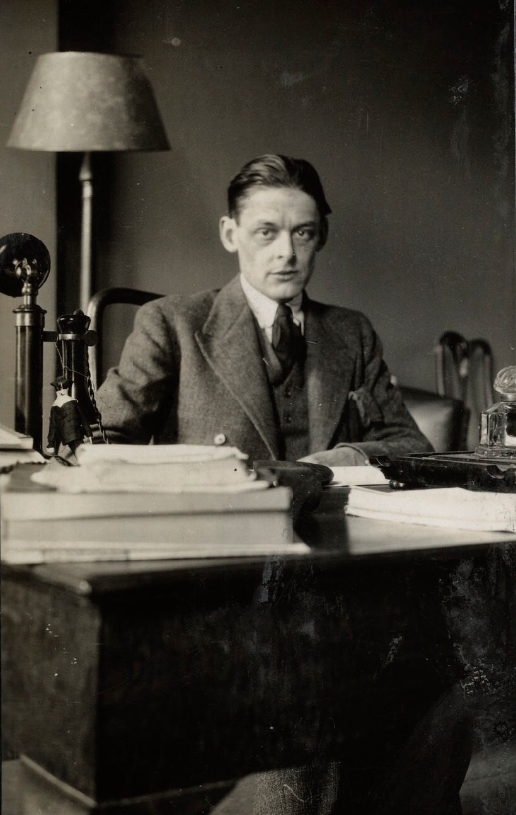
Why Translate Seneca?
The following conversation between Dana Gioia and Mateusz Stróżyński was conducted via e-mail, in response to a series of questions, as a follow-up to an earlier discussion that was hosted on 30 May 2023 by the Faculty of Polish and Classical Philology at Adam Mickiewicz University.
What drew you to Hercules Furens? Does this tragedy help illuminate or reflect any contemporary situation or circumstance?
DANA GIOIA: I’ve always been interested by verse tragedy, even before I knew I was going to be a poet. I didn’t study Greek tragedy in high school, but I read Sophocles and Euripides on my own (in the Robert Fitzgerald and Richmond Lattimore translations). The first elective course I took at Stanford was a two-term freshman seminar on tragedy taught by a courtly older man who chaired the Spanish Department. (He preferred Racine to Shakespeare and often lamented the haphazard methods of Golden Age Spanish theater.) We read every major tragedian in the Western tradition, except Seneca. That struck me as odd. There was a similar silence at Harvard grad school. Finally, when I left academia, I explored Seneca. I knew Classical Latin poetry but nothing about Roman tragic theater. I read Thyestes in translation, and I was dazzled by its violent splendor. I read the other plays, one by one.
I chose Hercules Furens to translate because of its fabulous account of the Underworld. The play was the missing link between Virgil’s Aeneid and Dante’s Inferno. My interest wasn’t scholarly. Those poems were foundational to my own sense of being a poet. I particularly admired Virgil and Dante’s ability to create powerful, multi-leveled narratives that never lost their lyrical impulse. Musicality is the necessary magic of narrative poetry. It is also a quality missing from most contemporary poetry. From Seneca I learned how to present drama that alternates between regular action and sudden but sustained moments of extreme emotion. You can call these high points verbal arias or poetic oratory. In theater, they are called “show-stoppers”. Seneca’s lyric tragedies helped me write poetic texts for opera.
MATEUSZ STRÓŻYŃSKI: I became interested in Hercules Furens during my research on Euripides’ Heracles and Medea, which I began around 2010. I tried to look at the meaning of infanticide in those two plays, from a psychoanalytic perspective, trying to bring together my interest in Classical drama and psychoanalysis as well as my experience as a practising psychoanalytic psychotherapist. What struck me was that Seneca’s Hercules was much more similar to Euripides’ Medea than to his Heracles. Both seem to give an incredible insight into what has been conceptualized in psychoanalysis as pathological narcissism, especially by authors such as Herbert Rosenfeld, Heinz Kohut, and Otto Kernberg.
Seneca’s Hercules (like Medea) describes a destruction of the inner capacity to love and depend on others, through a desire to control both the self and the others. I think the horrifying sterility of the Underworld in Seneca reflects the inner emptiness and deadness of a narcissistic personality, which inevitably manifests itself in aggression and destruction. But as we can see in Seneca, this narcissistic dynamic is often masked by a narrative of saving the world from monsters in order to bring peace and harmony.
Hercules, at first, is presented by others and himself as a saviour and monster-killer who is going to establish a mythical Golden Age. But the ultimate result is that his wife and his children are destroyed in a most horrifying way.
I think this narcissistic dynamic, which has taken control over Western society in the last few decades, has been depicted powerfully also by J.R.R. Tolkien (the Ring in Lord of the Rings destroys the soul of its bearer in exchange for invisibility and power) and J.K. Rowling (in the Harry Potter novels, the Horcruxes of Voldemort give him ‘immortality’ at the price of splitting his soul). Seneca’s play is unfortunately prophetic in the way it describes how we, as a society, sacrifice what is most fragile and precious in our pursuit of utopian control over our own bodies and minds, and those of people around us.

How do you square Seneca philosophus with Seneca tragicus?
DG: I feel no difficulty in reconciling Seneca the philosopher and Seneca the tragedian. One hears the same voice and senses the same underlying vision. In both prose and verse, Seneca also punctuates his arguments with striking maxims.
Seneca’s prose is civil speech. He wrote carefully composed letters to friends that were intended to be circulated and shared. Seneca invented the essay form, even if the new genre wasn’t named for another 1500 years. He wrote his letters for the Roman equivalent of the editorial page. His plays were composed in a different form (verse) and genre (tragedy). They are intended to be performed aloud by different voices in theatrical time. Whether they were staged or not doesn’t matter. They were written to be declaimed in a high dramatic style.
I understand the Classicist’s need to be skeptical about all the texts and information that have survived from antiquity. But for Seneca the evidence supports single authorship.[3] What bothers scholars is the calm rationality of the prose and the violent force of the plays. I would explain those salient differences in two ways.
First, what great tragedy is calm or reasonable? What revenge drama lacks bloodshed or brutality? Roman society was violent and not merely in the Colosseum. I imagine that first-century popular tragic theater was a mixture of noble verse, resonant recitation, and Grand Guignol staging. I believe that as our own popular entertainment has grown more graphic in its depiction of violence, the contemporary reader is less bothered by the repulsion felt by Victorian and Biedermeier scholars. How violent is Hercules Furens compared to Pulp Fiction or Casino—not to mention hundreds of slasher films such as the Scream or Halloween series? Like imperial Romans, we have become inured to horror and brutality. We understand how artists may find it necessary to describe aspects of our society.
Second, it should be self-evident that the moral essay is a different genre from tragedy in both form and content. Each form allowed Seneca to express parts of himself. His epistles show him as the rational civic man. In the tragedies, Seneca could hide behind the legends. Their violent plots allowed him to express more directly the brutal injustice of Roman life. Behind the mask of a dramatic character, he could howl in horror at the cruelty of fate. He was the first Latin writer to live in a totalitarian system. His great theme in both his prose and drama is the indifference of fate and inevitability of death.
MS: Of course, Seneca tragicus vs Seneca philosophus presents a serious problem, primarily because the goal of Stoicism was the healing of pathological affective states by the use of reason, and certainly not exciting those affective states by presenting audiences with heroes being haunted by the inhabitants of the underworld, or murdering close family members with elaborate sadism. But this is what Seneca’s tragedies depict with such an impressive skill and (perhaps) even with occasional relish, which becomes the more disturbing the longer you think of it (so it’s better not to).
Scholars have come up with many hypotheses concerning the Stoic or un-Stoic character of Seneca’s plays. Alessandro Schiesaro, for instance, believes it is a Freudian “return of the repressed” in Seneca the Stoic. I tend to think Seneca chose to describe the dangers of emotional madness in a dramatic way as a sort of praeparatio Stoica, the first stage of a philosophical conversion to spiritual and moral sanity. In this way, it is a bit like the later Augustinian strategy of confessio: you need to show your sickness to the doctor, without trying to hide anything, before it can be properly treated and got rid of. And Seneca and St Augustine are precisely the two most psychologically insightful literary geniuses of ancient Latin literature. They are really, in some sense, the ancient predecessors of Freud. Like Dante later, they put you in hell before they show you a path to purgatory and paradise.
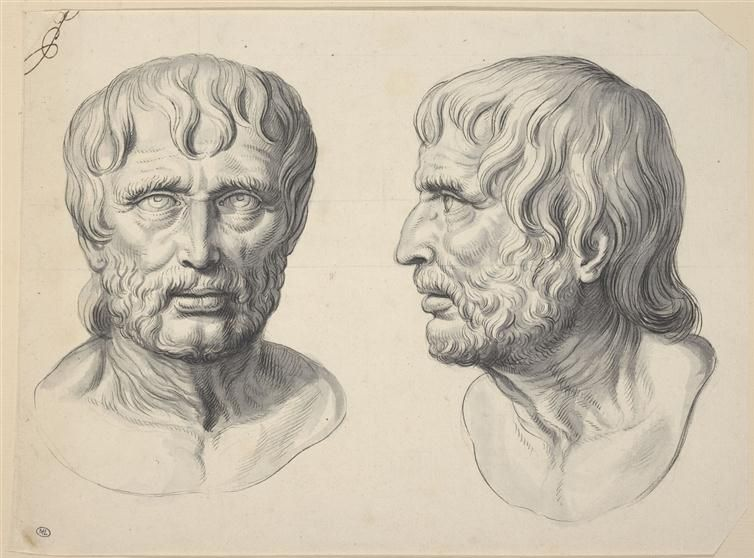
How do we conceive of performing HF for a modern audience?
DG: I wrote the first version of The Madness of Hercules to be performed. I was fascinated by the idea of reviving verse theater. I hoped to create a faithful poetic version of Hercules Furens that worked in live theatrical performance. I wanted the audience to feel the power of both the dramatic action and the poetic speech. There was a young businessman in New York City, Richard Ryan, who told me in a bar one night that he wanted to mount the project. (He was not rich, by the way, he was just enthralled by theater and poetry.) Ryan created Verse Theater Manhattan to stage my translation. He went on to produce many other verse plays.
We made a radical production decision – we trusted Seneca and the play. We cut the text only slightly. The staging was minimal. The actors were directed to perform the text as verse – to let the power of the language animate their characters. The long speeches were not the impediments that most scholars declared; they were the driving forces of each scene.
My translations tried to preserve Seneca’s rhetorical design and recreate the poetry. I thought of the major monologues as great operatic arias for the actors. They need poetry to work. The Madness of Hercules was produced in a mid-sized theater in lower Manhattan. We sold out both nights, and the audience responded enthusiastically.
MS: That’s very interesting. As far as I know, Senecan plays have not been performed in any theaters in Poland. My senior colleague from Poznań, Elżbieta Wesołowska, translated his Agamemnon and Medea into Polish around 25 years ago, and a student theatrical group in our Classics department, called “Sfinga” (“The Sphinx”), performed Medea, around 2008. I’m not a theatre specialist, but I’m completely convinced by Dana’s operatic vision of the ideal Senecan performance. I think his translation shows the need of real poets who will be able to translate for us ancient poetry in a congenial way. I’m not a poet, but a scholar and a lover of poetry, so my translation is different. But I think we need to have a variety of translations, written for various purposes and various audiences.

What were the most formidable challenges in translating Hercules Furens into verse in a modern language?
DG: There were several practical problems in translating Seneca’s play. First of all, there was no successful model for his tragedies in English. The Tudor-era versions may have worked for Elizabethans, but they now seemed awkward and remote. They hardly felt like plays at all. I had to imagine what Hercules Furens should be in English. What should it sound like? How should it move as theater?
I decided that the plays needed to be unabashedly formal, poetic, and theatrical. I wanted the momentum of a tragedy by Shakespeare or Marlowe punctuated by the emotional high points of opera. The poetic language needed to be contemporary but timeless. Every line, however elevated, had to sound like spoken English. The language had to communicate to both the actors and the audience the complicated humanity of the characters.
The play has many long monologues. Those episodes baffle scholars, but I believe that Roman audiences loved such oratorical pyrotechnics. In English, those speeches had to enchant, seduce, cajole, alarm, and at times terrify the audience. I worked hard to sustain Juno’s opening monologue. It is one of the greatest rants in literature. She needs to bring the house down like a great diva, which is literally what Juno is.
The hardest part was not giving up, not plugging in lines that weren’t good enough. Hercules Furens had to work as poetry to work as theater. I spent over a year doing the first version of the play. Then I spent two months revising it for its final publication. I saw a hundred small things that needed sharpening. I hope the results please Seneca’s shade. I wouldn’t want to upset the ghost who wrote Thyestes.
MS: Well, I guess the greatest challenge is to make this work accessible to a modern audience (both as a book to read and as a play on stage), without losing its literary sophistication and rhetorical brilliance. Seneca is highly condensed in terms of meaning; there are magnificent, sometimes extremely detailed images which are difficult to reproduce.
I decided to follow the Polish tradition of retaining the original number of lines in my translated version. Of course, it doesn’t mean that any particular verse, say line 50 or 150, corresponds exactly in the Polish version with verse 50 or 150 in the Latin original. Still, I managed to follow that rule in principle, and every scene contains the same number of lines in Polish as it does in Latin (so it’s also easy to use for those who want to compare the original with the translation).
However, in order to do that and remain faithful to the original, I had to decide which mythological allusions or which details in any given place were essential and had to be retained or reproduced in Polish. The Polish language is similar to Latin in terms of inflection and syntax, which is good for a translator, but if I tried to mirror exactly the baroque richness of Seneca’s style in the Polish version, it would sound comic, if not grotesque and unintelligible at times.
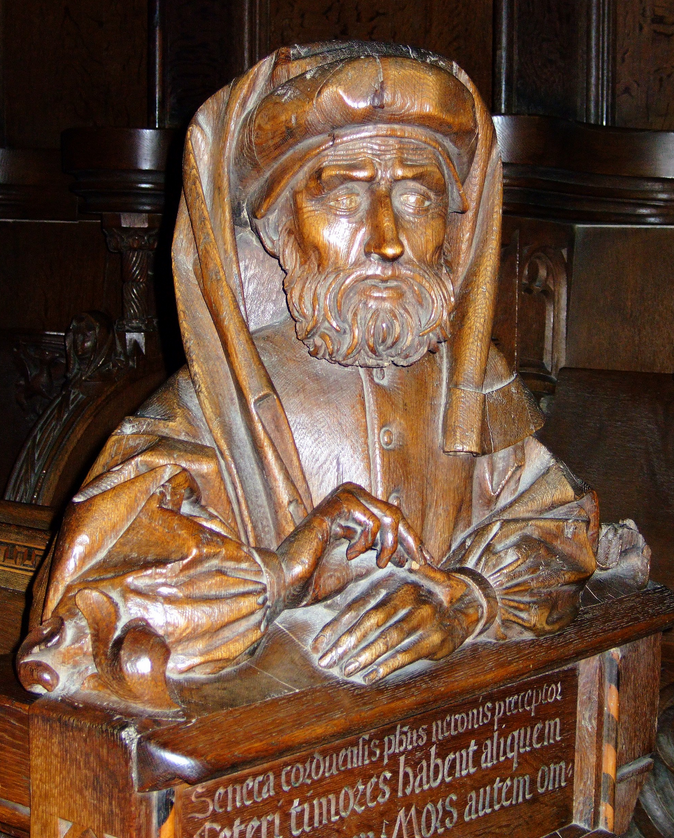
In practical terms, explain your process of rendering Seneca’s Latin into verse in a modern language.
DG: I made the decision that the body of the play – all the lines spoken by individual characters – would be written in blank verse. That is the standard meter for English verse drama. I often use it in my own poetry. Well done, iambic pentameter sounds like natural speech.
I respected the stichomythia.[4] It has a powerful effect in both Latin and English. When characters speak stichomythia, they are having crucial conversations. I put those exchanges in epigrammatic form – one line symmetrically answering the other. The statement and retort form a couplet.
I felt the choruses needed to be even more formal. I added rhyme, and I put them in different meters from the conversational lines, just as Seneca did in Latin. I gave each chorus a different meter so that it would have an individual sound. I also modeled each chorus after a classic English poem – not in style or diction but in its musical shape or stanza.
I liked the gravity those echoes gave to the words. That is what Seneca did. His choruses are full of allusions to his predecessors from Aeschylus to Virgil. He embeds them in the tragic and epic traditions. The chorus in Roman drama did not have the ritual gravity of the Athenian originals, but it still carried the associations of something grand and sacred. I wanted to capture that sense of civic ritual.
I didn’t translate the play line by line, though I did translate every line. I worked by taking each group of lines – whatever constituted an extended unit of sense – and bringing them over as a continuous poetic passage. For example, in her opening soliloquy, Juno itemizes the constellations of the Zodiac as mementos of Jupiter’s mistresses and illegitimate offspring. I translated the catalogue of Jupiter’s adulteries as single line of thought, since it had to work as an extended dramatic moment. I made the whole monologue – which takes up the entire first act – a raging flow of speech with peaks and valleys of emotion. I wanted the actress to have a map of sound and meaning to guide her performance. I was also careful to make each character sound slightly different. A play is only as good as its characters and their conflicts.
I didn’t mind the ridiculous amount of work The Madness of Hercules required. I knew I would never make a dime from the play – and that matters to a free-lance without a regular salary. I felt it was more important to learn the techniques of tragic theater. (There are certain things a writer can learn only from the inside.) I also wanted the experience of staging a verse play. There was no other way to get the training I needed. It was the kind of madness a poet needs.
MS: I decided to use Polish verse with meter but without rhyme throughout the play. The key thing was, of course, to make the dialogues different from choral odes. For the dialogues and speeches, I used the Polish 13-syllable alexandrine, which is a traditional heroic meter in Polish poetry, used, most significantly, by Adam Mickiewicz in his national epic poem Pan Tadeusz. It sounds dignified to a Polish ear, but has also a story-telling ring to it, and a somewhat free-flowing musical quality, which seems suitable for verse drama.
For the choral odes, I chose the Polish hendecasyllable, which is the second-most often-used type of verse in Polish poetry of the 19th century. To a Polish ear it recalls some of the most sublime lyrical poems in our tradition, like the magnificent Hymn by Juliusz Słowacki, which describes his nostalgic contemplation of the sunset from a ship near Alexandria.
I started working on this translation eight years ago, and at first I experimented with shorter meters, but I changed my mind after realizing that I wouldn’t be able to do what I wanted to do within this framework. I found John Fitch’s commentary on Hercules Furens (1987) extremely helpful in understanding the linguistic and stylistic nuances of the texts as well as literary and mythological allusions in it. But I must admit that I still would have made a couple of mistakes in translation (or even in understanding the Latin text at times) were it not for a fantastically diligent editorial review, written by a Polish Latinist, Jakub Pigoń (University of Wrocław). I’m very grateful for that review, which may have spared me from a vengeful visitation from the underworld that Dana seems to be wary about as well…
I also had the opportunity to share some of this translation, at different stages, with my colleagues at the Institute of Classical Philology. We have a tradition of meeting once a year, just before Christmas, to recite to each other, over a cup of tea and cake, some samples of our ongoing translation projects. While translating, I would not only read the text silently, but also recite it aloud and hear how it sounds. It was really helpful, when I look back, to be able to recite it to my colleagues as well. I remember that I chose to perform my favourite parts: Juno’s prologue, the first choral ode, and, of course, the underworld description.
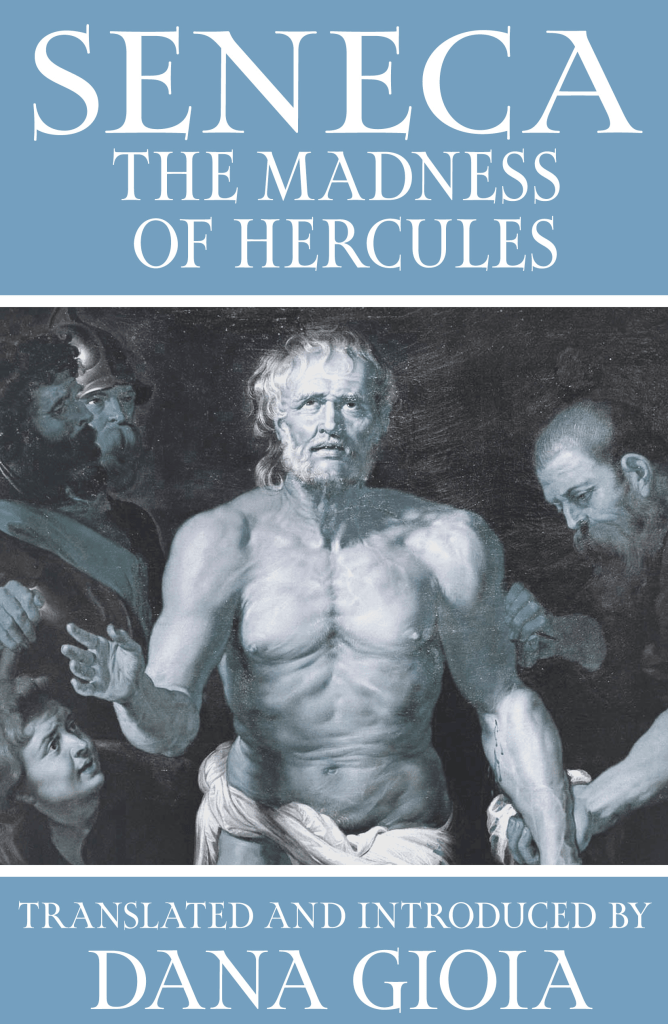

Dana Gioia is an award-winning poet, critic and translator. A former Chairman of the National Endowment for the Arts, and former Poet Laureate of California, he has published six volumes of poetry, including Meet Me at The Lighthouse (Graywolf Press, Minnesota, MN, 2023) and 99 Poems: New and Selected (Graywolf Press, Minnesota, MN, 2016). His most recent prose work is his 2021 memoir Studying with Miss Bishop: Memoirs from a Young Writer’s Life (Paul Dry Books, Philadelphia, PA). The Madness of Hercules was published by Wiseblood Books (Milwaukee, WI).

Mateusz Stróżyński is a Classicist, as well as philosopher, psychologist and psychotherapist; he is interested primarily in the study of Platonism from antiquity to the present. He has published Polish translations of the writings associated with St Angela of Foligno (2016, 2018) as well as St Augustine’s sermons for Christmas and Epiphany (2019); in English he has produced a selection of poems by the Polish Romantic poet Adam Mickiewicz, which will be available in summer 2023.
Notes
| ⇧1 | See his Selected Essays 1917–1932, or – better – volumes 2 and 3 of The Complete Prose of T.S. Eliot, published in 2014–15 by Johns Hopkins University Press. |
|---|---|
| ⇧2 | Seneca in English, p.151. |
| ⇧3 | Seneca’s authorship of the eight surviving tragedies of course remains unquestioned; only the plays Octavia and Hercules Oetaeus, which were transmitted in manuscript along with Seneca’s authentic works, are considered the work of another hand. What is meant here is the apparent anomaly that someone who wrote such wise, measured, calming prose could have composed verse tragedies as shocking as Hercules Furens – how could the same man have written both? And yet he did – and might also be responsible for the Apocolocyntosis, a cynical, scurrilous, absurd satire mocking the Emperor Claudius. |
| ⇧4 | This is the term for actors alternating their speech by alternating every line back and forth. |